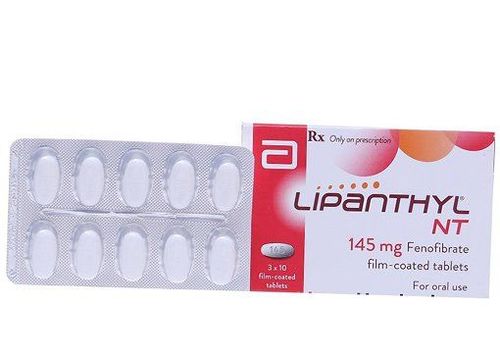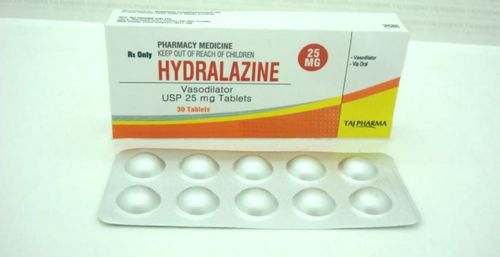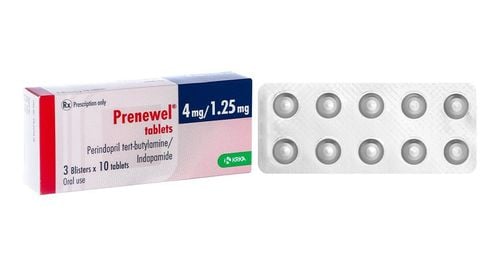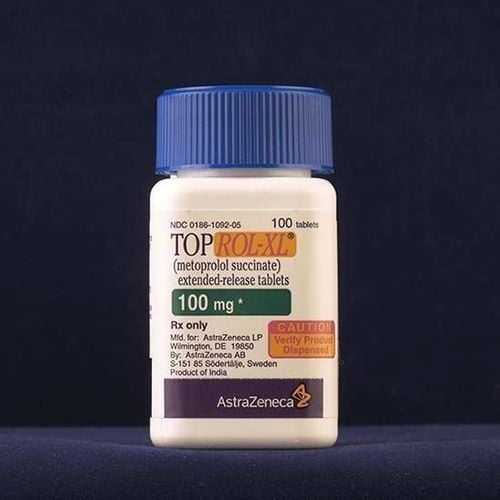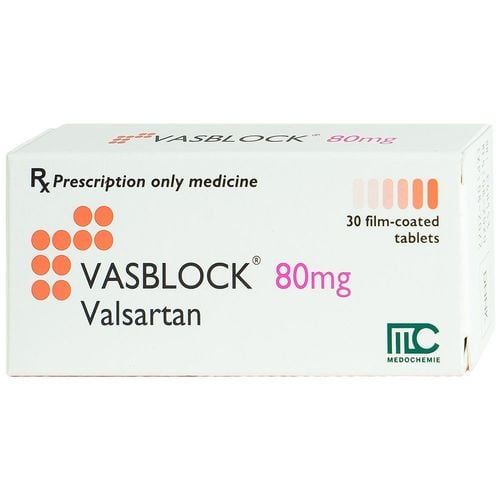This is an automatically translated article.
Beta-blockers are part of the treatment regimen for hypertension. There are different active ingredients in this group of drugs and one of them is Labetalol. What does Labetalol do?
1. What does Labetalol do?
Labetalol is one of a group of drugs used to treat high blood pressure. Good blood pressure control helps prevent stroke, heart disease, and kidney disease. What does Labetalol do? Labetalol is an alpha-adrenoceptor blocker and a beta-adrenoceptor blocker. Therefore, the drug inhibits the effects of certain chemical mediators in the body (such as epinephrine) on the heart and peripheral blood vessels. This effect reduces heart rate, blood pressure, and pressure on the heart.2. How to use Labetalol
Labetalol is an oral medication prescribed by your doctor, usually twice a day. Patients can take the drug before or after meals, but the most important thing is to choose a fixed use for all times. The dose of Labetalol is based on the individual patient's medical condition and response to treatment. To limit the risk of side effects, physicians may instruct patients to start at a low dose and gradually increase the dose according to treatment response. The patient should follow all the doctor's instructions carefully.Use Labetalol regularly and continuously for the most tightly controlled blood pressure. Patients need to make it a habit to take their medicine at the same time every day to avoid forgetting the medicine. For blood pressure readings to reach therapeutic goals, patients may need several weeks of continuous labetalol medication. Also continue taking labetalol even if the patient feels better because in most cases of high blood pressure there will be no symptoms. Patients should notify their doctor immediately if blood pressure readings do not improve or increase.
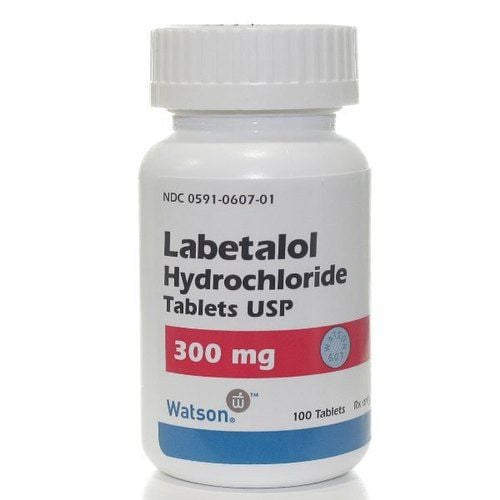
Thuốc Labetalol cần được uống cố định thời gian với tất cả các lần uống.
3. Labetalol side effects
The most common undesirable effects of the drug are dizziness, fatigue. Scalp itching can also occur during the body's adaptation to labetalol. In addition, decreased sexual desire or ability is a well-recognized but very rare side effect. If any of these side effects persist or get worse, the patient should promptly tell their doctor or pharmacist. To limit the risk of dizziness and lightheadedness, the patient should avoid changing positions too quickly, especially from a sitting or lying position to a standing position.
Labetalol may reduce blood flow to the patient's hands/feet and cause cold extremities. The risk is higher for smokers. Therefore, patients should pay attention to dress warmly and avoid smoking.
Some serious side effects of Labetalol should be reported to your doctor right away, including:
Very slow heartbeat; Severe dizziness; Faint; Blue-violet fingers/toes; signs of acute heart failure or an exacerbation of chronic heart failure (eg, shortness of breath, ankle/feet swelling, unusual fatigue, unusual/sudden weight gain); Mental/mood changes (such as confusion, mood swings, depression). Labetalol can cause some serious (rarely fatal) liver problems. If the patient notices any signs of side effects such as persistent nausea/vomiting, abdominal pain, yellowing of the eyes/skin, dark urine, etc., immediately contact a medical professional. Labetalol medicine rarely causes serious drug allergies, but patients should call 911 immediately for help in case of signs of an allergic reaction such as generalized rash, itching sensation with swelling of the parts of the body. body (especially face/lips/tongue/throat), dizziness, trouble breathing.
4. Precautions when using Labetalol
Before treating with Labetalol, the doctor or pharmacist should make sure the patient is not allergic to the drug and be aware of other allergic conditions. Labetalol products also contain ingredients that can cause allergic reactions or other health problems.
The doctor or pharmacist should take the patient's medical history before prescribing Labetalol, especially:
Cardiovascular diseases (such as heart failure, bradycardia, 2nd or 3rd degree atrioventricular block). ); Respiratory diseases (such as asthma, chronic bronchitis, emphysema); Kidney disease, liver disease; Hyperthyroidism; Severe allergies (including those requiring treatment with epinephrine); Vascular disease (such as Raynaud's disease, peripheral vascular disease); Mental/mood disorders (such as depression); Myasthenia gravis; Certain eye problems (cataracts, glaucoma). For patients with diabetes, Labetalol may mask the signs of tachycardia of hypoglycemia. However, other symptoms of hypoglycemia such as dizziness and sweating will not be affected by Labetalol. Labetalol can also make it harder to control your blood sugar. Therefore, you should check your blood sugar regularly as directed and share the results with your doctor. Also, notify your doctor immediately if you have symptoms of hyperglycemia such as increased thirst, increased urination. At that time, the doctor may need to adjust the dose of sugar control drugs, change the patient's lifestyle and diet.
Before surgery (including cataract/glaucoma surgery), tell the surgeon that you are or have ever taken Labetalol and all other products (including prescription drugs). prescription, over-the-counter medicines and herbs). Older adults are more sensitive to the side effects of Labetalol , especially dizziness and lightheadedness... these problems increase the risk of falls for older adults . Labetalol is used to treat high blood pressure in pregnant women. It is important to control blood pressure stably to limit the impact on the health of the pregnant woman and the fetus. If you are planning a pregnancy, are pregnant, or think you may be pregnant, discuss with your doctor the benefits and risks of using labetalol during pregnancy.
Babies born to mothers who took labetalol during pregnancy may have unusual symptoms such as low blood pressure, slow heart rate, slow breathing, and low blood sugar (such as shaking, sweating) for a few days. full postpartum. To be on the safe side, tell your doctor right away if you notice any of these symptoms in your baby. Labetalol can pass into breast milk but the effects on the infant are unclear.
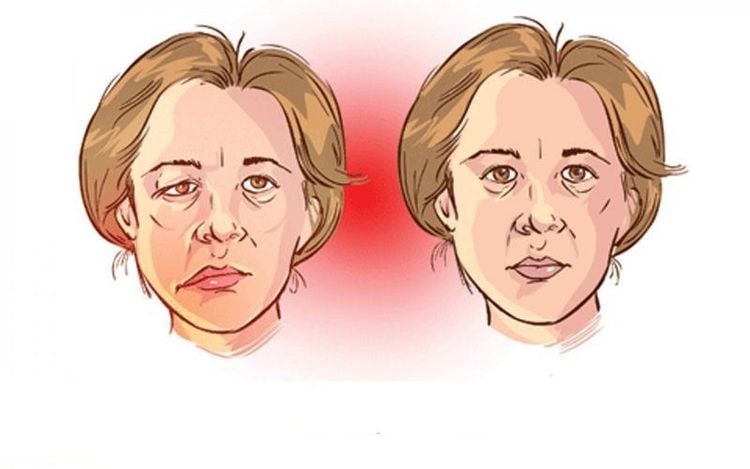
Người bị bệnh nhược cơ nên thận trọng khi uống Labetalol
5. Labetalol drug interactions
Drug interactions are important factors that affect how labetalol works or increase the risk of serious side effects. Some products that may interact with Labetalol include: cimetidine, fingolimod. Some products have ingredients that increase a patient's heart rate or blood pressure. Talk to your pharmacist about the products you are using and how to use them safely (especially cough and cold medicines, diet aids, or NSAIDs such as ibuprofen/naproxen).
Labetalol may affect the results of some laboratory tests. Therefore, make sure the test technician and the doctor know that the patient is taking Labetalol. Symptoms of an overdose of Labetalol include: very slow heartbeat, severe dizziness, weakness, fainting, trouble breathing.
Lifestyle changes can help labetalol work better (implementing stress reduction programs, exercise, and dietary changes). Patients should learn to check their blood pressure and heart rate regularly while taking Labetalol and share the results with their doctor. Liver function tests should be performed periodically to monitor disease progression or check for labetalol side effects. If the patient misses a dose, take Labetalol as soon as you remember. If it is almost time for your next dose of Labetalol, skip the missed dose and do not take a double dose.
Store Labetalol at room temperature, away from light and moisture, do not store it in the bathroom, keep it away from children and pets. Do not flush Labetalol down the toilet or down the drain unless it has expired or is no longer needed. Labetalol is an oral medication prescribed by a doctor. To ensure the effectiveness of treatment, patients need to take the medicine according to the prescription and strictly follow the instructions of the doctor or pharmacist.
Please dial HOTLINE for more information or register for an appointment HERE. Download MyVinmec app to make appointments faster and to manage your bookings easily.
Reference source: webmd.com




